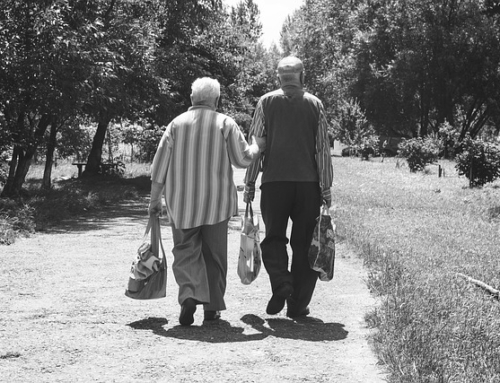By Eddie Pipkin
We have entered the season in which fall festivals, autumn carnivals, pumpkin patches, and trunk-or-treats are popular, so it’s a good time to reflect on what makes an event engage the community in  meaningful ways. This is a separate discussion from what makes a successful event – that’s a valuable discussion in its own right, of course, which would be focused on logistics and leadership – but you can have a very successful on-campus event that is fun for your congregation or raises lots of money but still fails to engage the surrounding community in any meaningful way. An event that centers on the relationship between a congregation and its surrounding community will move that relationship forward in new and healthy ways.
meaningful ways. This is a separate discussion from what makes a successful event – that’s a valuable discussion in its own right, of course, which would be focused on logistics and leadership – but you can have a very successful on-campus event that is fun for your congregation or raises lots of money but still fails to engage the surrounding community in any meaningful way. An event that centers on the relationship between a congregation and its surrounding community will move that relationship forward in new and healthy ways.
Many of our traditional seasonal events have been handed down from generation to generation, so it’s always a good idea to step back and ask some basic questions of “legacy” events:
- Is there still energy around this event? Do people in our congregation and in the wider community still get excited about it?
- Is there still support for it? Are we able to find the workers we need to make it happen (or do we find ourselves engaged in arm-twisting or guilt-tripping just to pull it off)? Does it still make financial sense? Do we have the budget for it? Do local businesses get excited about getting on board to make it happen?
- Does it still serve the current vision of our congregation? (And no beans about it, your congregation should have a clearly stated vision for its role in the community – does this event move that vision forward?)
Having answered those basic questions – and for an exercise in your next staff meeting or leadership gathering, use these questions as an exercise in clarity – a broader question is whether the event serves the community or whether it asks the community to serve your church? There is some nuance in making such a determination, but basically, we are asking if a specific event serves a community need or whether it asks people to come to your campus and help fill a need of your congregation (like raising funds, the number one incentive for most local churches to host most events). Of course, if you are asking the community to empower an identified mission, and if that mission enhances the community, you can certainly make a case for it. A fund raiser festival to supply the local food pantry, support after-school programs, or facilitate mental health screening would be noble causes, and if community members could have some fun at the fair and support those causes in the process, all to the good. If, on the other hand, you are hosting a fall festival in order to exclusively fund your internal children’s programs, that’s worthy of debate.
The defining question for a community-engaging congregation is whether the event serves a clear community need. We’ll move past the argument that every community needs an opportunity to hang out and celebrate together, get to know each other better, and build community identity – indeed they do – the trick is in helping them celebrate what makes their community unique and giving them tools for meaningful interactions and relationship starters that evolve beyond the time frame of the event. Here are a couple of questions:
- Are we providing a means for conversations to happen?
- Are we providing ways for people to share? (Their stories? Their ideas? Something creative? A way to make the community better?)
- Are we providing ways for people to respond beyond the event? (Services to which they can connect? Someone who will pray for them? Structures for connecting to other people?) Again, as I wrote about extensively in last week’s blog, we are not talking here about giving them a list of classes and programs, but options for engaging in relationships.
Answering the question of whether an event meets the needs of a community means we have to know as much as we can about our community. We here at EMC3 our big believers in thoroughly digesting the demographics and data of your community. It is good to know how the data match (or don’t match) the assumptions you are making about the neighborhoods that surround you. Once you have the knowledge gained by demographic profiles and discussions with community leaders, you can come up with ideas that move beyond traditional seasonal options. Fall festivals are fun, but if every neighborhood group and school are hosting them, it’s hard for your congregation to differentiate itself. On the other hand, what if your research and observations identify specific areas of community concern:
- Literacy. What if your surrounding community has pockets of educational concerns such as literacy? You might hold a literacy event on campus, partnering with the local library system, bookstores, schools, and local writers’ groups.
- Health care. What if your surrounding community struggles with health issues? You might host a health fair, partnering with local medical providers, social services, and fitness advocates. You could tie this in with a fun run or organized bike ride.
- Cultural exchange. What if your surrounding community is experiencing changes in neighborhood demographics? You could host a cultural fair at which diversity is celebrated by everyone getting together to share their cultural traditions, foods, and crafts.
- Older adults. What if your surrounding community features an aging population? You could host events that link folks to community resources, volunteer opportunities, and ways to connect. As we have noted in previous blogs, loneliness among the elderly (who find themselves increasingly isolated as their health diminishes) is a chronic problem, and relationships are key to solving this problem, as reiterated in a new survey of elders analyzed in Time just this week:
The survey points to the importance of maintaining meaningful relationships — and suggests that when it comes to social contacts, more is better. Those who qualified as lonely tended to have fewer people with whom they said they could “discuss matters of personal importance” or turn to for support. And there seems to be something special about seeing people in person: Despite the fact that older adults’ use of social media increased substantially between 2010 and 2018, the habit didn’t seem to make a dent in loneliness rates, the report says. In fact, frequently interacting with acquaintances on social media seemed to modestly increase a person’s likelihood of being lonely.
Local congregations provide an excellent clearinghouse of opportunities for elders to engage with one another and to establish relationships with younger generations. Many churches do noble work in providing facilities and programs to support these connections.
- Single parents. What if your surrounding community is home to many single parent families? You can host an event that connects these parents to resources focused on their specific needs: tutors, financial planning, after-school programs, free or cheap options for family fun, and gives them a pathway to connect to other single parent families.
- Pockets of poverty. What if your surrounding community is relatively affluent but close to areas that aren’t? You could host an event that focuses on welcoming residents of those areas and offers connection to social services, financial planning, mirco-lending programs, arts and educational experiences, or job training and recruitment.
- Substance abuse. What if your surrounding community is one of the many currently plagued with the rise in drug-related deaths? You could provide an awareness event that links people to support resources and networks of hope.
Of course, in many of the above cases, we could heighten the impact of the community connection by moving these events into the community, rather than restricting them to church property. But there are sound logistical reasons for hosting things on the church grounds, so for most congregations a mix of locations is best, and for many, hosting any event off property is a big first step.
If we decide legacy events are important to us – that pumpkin patch really is an expected part of community life! — there are ways to tweak any event, large or small, to make it more community engagement focused:
- Partner with community organizations as sponsors of the event. That means finding a community group to co-lead and co-host an event with you (not just sharing the work, but sharing the leadership and benefits).
- Invite community organizations and community members to be a part of the event. That means finding community partners to help manage the event as volunteers or hosts of a booth or sponsors of individual portions of your festival, fun run, or trunk-or-treat.
- Host a community event at your facility. Invite community organizations to host their events at your property and support them in the promotion and execution of those events.
- Find ways to make community visitors feel special. Train your volunteers to spot visitors from the community and do something to make them feel welcome and celebrate their community identity.
- Avoid a community “shakedown.” Avoid building an event so that it feels to community members who attend as though their primary value to you is to support your fund raiser.
- Invite community members to envision a continuation of the relationship. Give people opportunities to establish and continue connections and relationships beyond the limited lifespan of the event itself. Focus on making the event all about the birth and sustenance of relationships!
Congregations that are faithful to these goals gain a reputation as vital partners in their communities. They are gathering places where all know they are welcome, whether they are members of that congregation or not. People know the folks at that church care about their neighbors, and, therefore, that church is respected and loved.







Leave A Comment